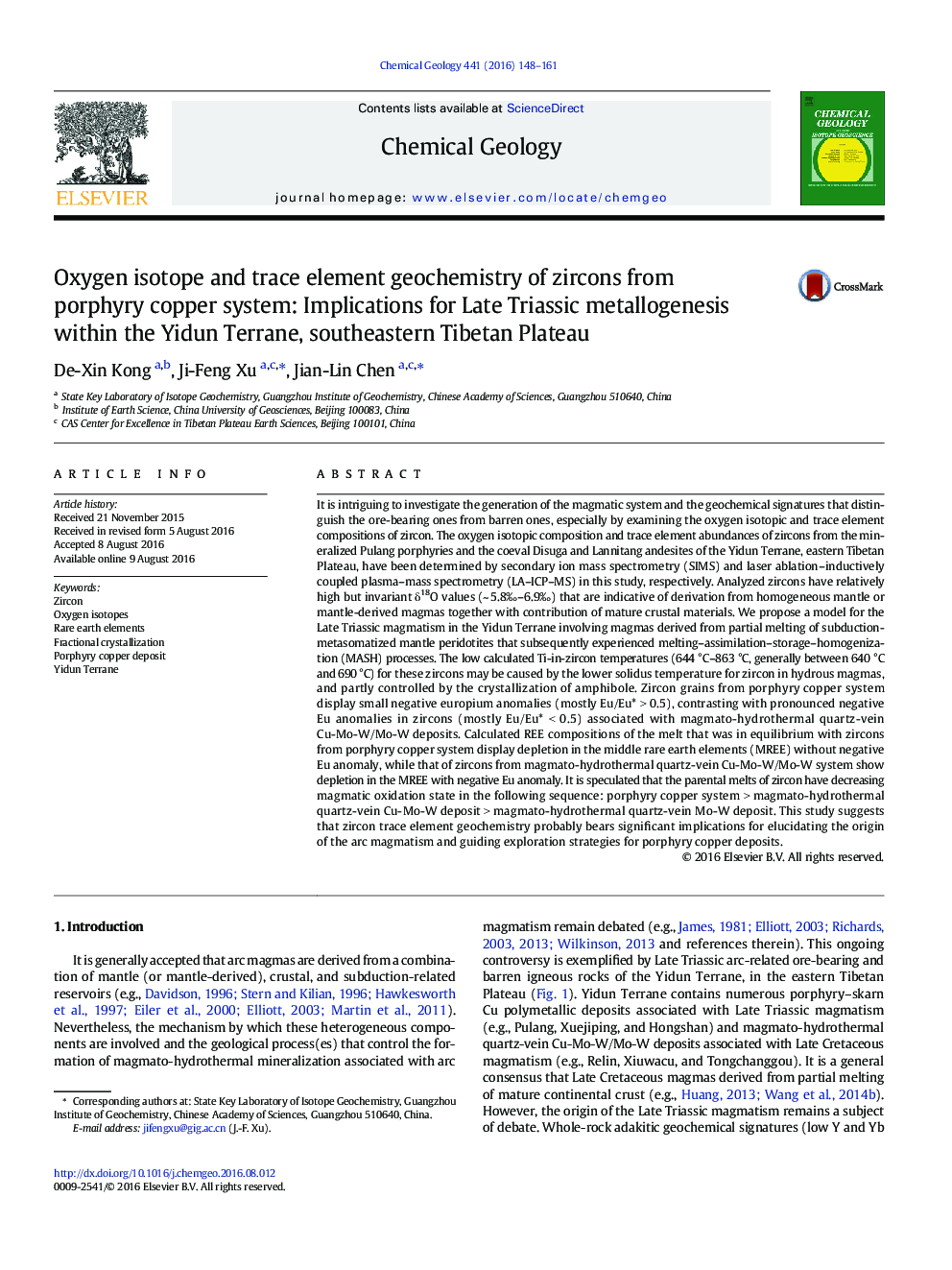| کد مقاله | کد نشریه | سال انتشار | مقاله انگلیسی | نسخه تمام متن |
|---|---|---|---|---|
| 4698214 | 1637533 | 2016 | 14 صفحه PDF | دانلود رایگان |
It is intriguing to investigate the generation of the magmatic system and the geochemical signatures that distinguish the ore-bearing ones from barren ones, especially by examining the oxygen isotopic and trace element compositions of zircon. The oxygen isotopic composition and trace element abundances of zircons from the mineralized Pulang porphyries and the coeval Disuga and Lannitang andesites of the Yidun Terrane, eastern Tibetan Plateau, have been determined by secondary ion mass spectrometry (SIMS) and laser ablation–inductively coupled plasma–mass spectrometry (LA–ICP–MS) in this study, respectively. Analyzed zircons have relatively high but invariant δ18O values (~ 5.8‰–6.9‰) that are indicative of derivation from homogeneous mantle or mantle-derived magmas together with contribution of mature crustal materials. We propose a model for the Late Triassic magmatism in the Yidun Terrane involving magmas derived from partial melting of subduction-metasomatized mantle peridotites that subsequently experienced melting–assimilation–storage–homogenization (MASH) processes. The low calculated Ti-in-zircon temperatures (644 °C–863 °C, generally between 640 °C and 690 °C) for these zircons may be caused by the lower solidus temperature for zircon in hydrous magmas, and partly controlled by the crystallization of amphibole. Zircon grains from porphyry copper system display small negative europium anomalies (mostly Eu/Eu* > 0.5), contrasting with pronounced negative Eu anomalies in zircons (mostly Eu/Eu* < 0.5) associated with magmato-hydrothermal quartz-vein Cu-Mo-W/Mo-W deposits. Calculated REE compositions of the melt that was in equilibrium with zircons from porphyry copper system display depletion in the middle rare earth elements (MREE) without negative Eu anomaly, while that of zircons from magmato-hydrothermal quartz-vein Cu-Mo-W/Mo-W system show depletion in the MREE with negative Eu anomaly. It is speculated that the parental melts of zircon have decreasing magmatic oxidation state in the following sequence: porphyry copper system > magmato-hydrothermal quartz-vein Cu-Mo-W deposit > magmato-hydrothermal quartz-vein Mo-W deposit. This study suggests that zircon trace element geochemistry probably bears significant implications for elucidating the origin of the arc magmatism and guiding exploration strategies for porphyry copper deposits.
Journal: Chemical Geology - Volume 441, 21 November 2016, Pages 148–161
